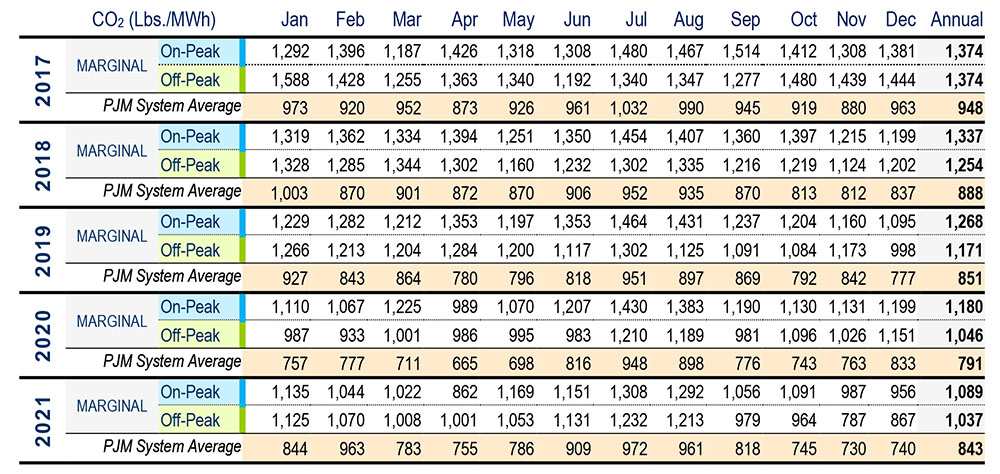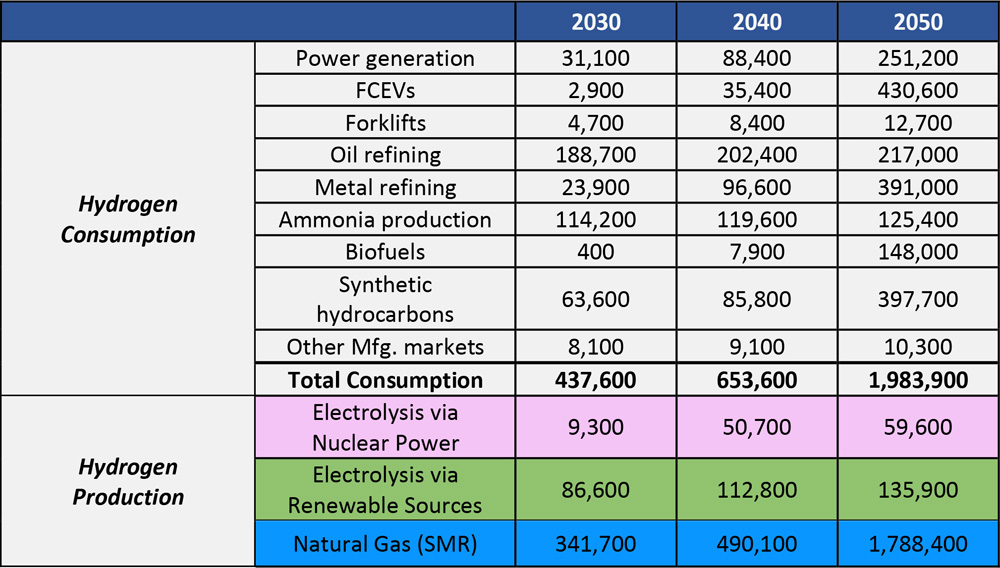U.S. industry produces and uses over 10 million tons of hydrogen a year, most of it “gray” hydrogen made from natural gas, spewing millions of tons of carbon dioxide into the atmosphere as part of the process.
In an all-of-government approach involving billions of dollars in research and new programs to fund technologies capturing that CO2, the Biden administration is aiming to convert gray hydrogen into so-called “blue” hydrogen. That would mark the first step in a shift away from fossil fuels and ultimately to producing “green” hydrogen through the electrolysis of water using only renewable power.
The goal, starting with heavy industry and trucking, is to cut overall U.S. CO2 emissions by 50% by 2030 while research, development and deployment of technologies to produce significant amounts of green hydrogen continues at breakneck speed.
Daniel Bresette, executive director of the DC-based Environmental and Energy Study Institute, moderated a discussion Wednesday focusing on the efforts needed to realize the administration’s goals — and the risks.
In brief remarks before the discussion, Sunita Satyapal, director of hydrogen and fuel cell technology at the U.S. Department of Energy, said federal research is heavy and ongoing.
“We have a DOE-wide strategic plan [that] you can see online. It includes multiple offices across the entire value chain, from production through end use, [including] renewables, nuclear, fossil with CCS [carbon capture and sequestration], from basic science all the way through deployments,” Satyapal said.
DOE is funding 400 active projects at over 200 companies and universities, 15 national labs, and ranging from $100 million to $400 million per year, she said. The agency’s top priorities are producing “low-cost clean hydrogen;” creating “low-cost, efficient — obviously safe” infrastructure, delivery and storage; and “enabling end use applications at scale.”
To illustrate the difficulty of producing hydrogen with electrolysis, Satyapal said producing 10 million tons of green hydrogen to match the amount of hydrogen now produced “would basically double today’s solar and wind” capacity, which also suggests the inefficiency of electrolysis as it exists today.
And it’s expensive.
“Today hydrogen is about $1.50 [per kilogram] from natural gas and over $5 from electrolysis,” she said. Other experts have put the cost of green hydrogen as much as twice that amount.
The administration is aiming to help industry develop electrolyzer technology capable of producing a kilogram of hydrogen for $1 by the end of this decade.
The research is occurring even as DOE has allocated $9.5 billion to develop regional hydrogen hubs to help industry produce more blue hydrogen by sequestering the resulting CO2 as well as electrolytic hydrogen.
During the discussion, Rachel Fakhry of the Natural Resources Defense Council argued that using electrolysis powered by today’s “fossil-heavy” grid to produce hydrogen could be even more polluting than using natural gas-based blue hydrogen.
She said “direct electrification” would be more efficient and argued that hydrogen as a combustion fuel is “generally inefficient.”
“A hydrogen fuel cell car will be less efficient than a battery electric car. Generally, a hydrogen boiler will be much less efficient than an electric heat pump, such that as a whole hydrogen pathway requires quite a lot of energy. And it’s quite inefficient when you have alternatives.
“We would need about five times more renewable electricity to heat a home with hydrogen than to heat that same home with a heat pump,” Fakhry said.
“And just imagine how much pressure on the energy system you would put by indiscriminately deploying hydrogen in applications that could be better served by direct electrification, and this will significantly complicate the task of decarbonizing our economy,” she said.
Fluctuating Prices
Alexa Thompson, an analyst with RMI, said the price of hydrogen made from natural gas is rapidly increasing at this time because the cost of the gas “has skyrocketed from the recent energy shocks caused by Russia’s invasion of Ukraine.” Quoting Bloomberg, she said the price of gray hydrogen in Europe last week had reached $6.70/kg.
“It’s unlikely though that the [$6.70] price will be permanent. But it does suggest that energy security and resiliency is another reason to favor green hydrogen production over blue,” Thompson said.
Thompson made a case for green hydrogen: “Today, the cost of green hydrogen is heavily dependent on the capital costs of both the electrolyzer and renewable energy. And both are expected to drop substantially, making those steep cost declines quite realistic.”
For example, electrolyzers that cost around $700/kW in electrical capacity today and are expected to drop to $200/kW in a few years. And because the price of renewable power varies by location, green hydrogen prices will also vary, she said.
As an example, she said green hydrogen prices in Texas, where wind power produces prodigious amounts of electricity, are about $3/kg, while prices in California are roughly $5.05/kg.
Thompson said the country needs a national clean hydrogen strategy. The billions allocated in the bipartisan infrastructure bill “are really a drop in the ocean compared to a market that could potentially be as large as $100 billion a year by 2030,” she said. To see that market develop, “we will need to see the commercial viability of green hydrogen.”
Bryan Pivovar, senior research fellow and manager at the National Renewable Energy Laboratory in Golden, Colo., heads a team working to that goal.
He said hydrogen has “unique attributes” in that it can function across different energy systems, adding that it has “the unique ability to be electrochemically converted efficiently, rather than having to be combusted.
“Hydrogen can act as a parallel infrastructure to electricity and natural gas and do a lot of the hardest sectors to decarbonize — transportation and industry,” he said.
NREL is leading a $50 million collaborative of industry, federal and academic researchers focusing on not only the technologies under development but also on how hydrogen will fit into the existing energy infrastructures, he said.
“Electrolysis specifically has the most competitive economics and basically allows you to balance the renewable generation challenges in ways that other hydrogen generation routes do not,” he said.





